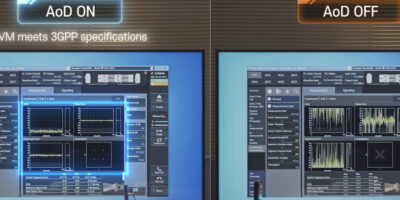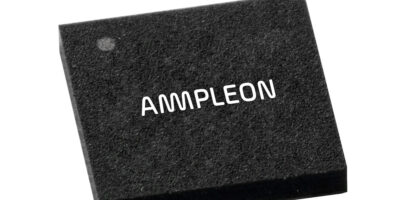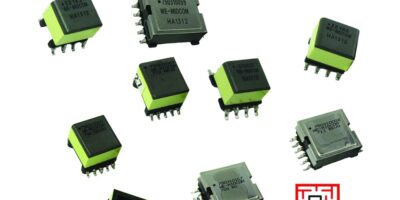At MWC21, OLED display touch sensor manufacturer, Dongwoo Fine-Chem showcased this transparent, on-display screen mmWave antenna for 5G.
The Antenna on Display (AoD) technology is a transparent antenna designed to deliver the best possible 5G coverage for smartphones and communication infrastructure.
Current 5G smartphones have mmWave antennae built into the side or the back of the device, which often causes interruptions to radio wave transmission and disruptions to 5G stability when users hold the smartphone. An antenna that fits on the smartphone screen reduces disruption, says Dongwoo.
“Technologies like augmented reality (AR) and virtual reality (VR) require mmWave 5G technology that delivers high speed and low latency,” explained Rha In-ho, CEO and president of Dongwoo Fine-Chem.
MmWave operates at 30 to 300GHz and one to 10mm in wavelength, making it particularly well suited to high-speed 5G, while securing a wide bandwidth at the same time. However, mmWave cannot pass most solid materials effectively. Dongwoo Fine-Chem’s AoD technology allows device manufacturers to install a transparent antenna on the display, where it is least likely to be obscured by users for stable mmWave 5G communication with minimal transmission interruptions. It can realise dual polarisation on the three frequencies (n257=26.5 to approximately 29.5GHz, n258=24.25 to approximately 27.5GHz, n260=37 to approximately 40GHz) of mmWave 5G that is most commonly used worldwide.
AoD technology can be applied to glass windows on vehicles and buildings, signage, or street lamps for them to function as an antenna. This way, they can be used to expand 5G infrastructure.
Dongwoo Fine-Chem specialises in touch sensors for OLED displays. The subsidiary of Japan’s Sumitomo Chemical was established in Korea in 1991. The company has manufactured high-purity chemicals, high-purity alumina, touch sensors, polarising film, and colour filters for semiconductors and LCD, OLED displays. In collaboration with local universities and companies, Dongwoo Fine-Chem has secured original and exclusive antenna design technologies, with the world’s only design and manufacturing technology in transparent antenna that can be integrated with displays.







